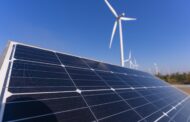For the first time since 2022, solar and wind projects will now be subject to a new discounted cash flow assessment model (the “2024 Model”). The inaugural 2022 Model, brought about by the enactment of Real Property Tax Law (“RPTL”) Section 575-b, remained in effect for the 2022 and 2023 tax years, following the resolution of litigation challenging the 2022 Model. See our alert, “RPTL § 575-b is Back!” Now the second iteration of the Model has been finalized by the New York State Department of Taxation and Finance (“DOTF”).[1] Assessors will use the 2024 Model to value solar and wind projects that are one megawatt and larger. This will be the assessment model for the current tax year and will remain in effect until the next update is released. Under the law, DOTF is required to release updates to the Model only “periodically,” while the discount rates are to be published annually. See RPTL § 575-b(1-a), (1-b). However, the structure of the Model effectively requires it be updated annually as it produces a value for only one year.
Changes reflected in the 2024 Model include (1) incorporation of net energy metering projects; (2) market transition credits/community credits and community adders now default to the highest credit amount unless overridden by the user; and (3) revenue forecasts, expense forecasts, and discount rates have been updated. Accounting for inflation, the pre-tax weighted average cost of capital (“WACC”) is now 6.68% for solar and 7.69% for land-based wind. This is a reduction from the 2022 Model, which used a WACC of 7.16% for large-scale solar and 8% for VDER projects and 9.66% for land-based wind. The decreases occurred despite a significant increase in the debt portion, as the 2024 Model weighs equity less than the prior Model, and the cost of equity dipped slightly.
Real vs. Nominal Interest. The 2024 Model now allows a comparison of 2023 dollars and nominal dollars. The figures above reflect the real WACC pre-tax figures. When using the nominal WACC, the pre-tax weighted cost is 9.35% for solar and 10.38% for land-based wind. While this comparison may be instructive when reviewing the income and expense projections of the Model, (which cannot be changed by the user), the assessment figure (a/k/a the present value) produced by the Model remains unchanged whether you use the real or nominal WACC. The intent of this functionality appears to be to allow users to forecast how inflation would impact income and expenses over time, but without affecting the output value.
Concerns were expressed during the public comment period about the real versus nominal rates; and, more importantly, the calculation of such figures within the Model. Investors generally use the nominal rate as it is a simple calculation that avoids potential errors.
Other aspects of recent inflation seem to have been ignored, such as the increase in typical O & M costs. The final 2024 Model did reduce the assumed revenue for VDER projects from 95% of gross VDER value to 92.5%, accounting for the subscriber discounts, utility administrative fees, and bad debt allowance. Though the industry had sought a 90% rate based on real world experience.
Confirm exemptions. The tentative roll publication is not only important for reviewing the assessment value set for properties, but also to determine if exemptions have been placed. And if so, if the exemption is valued correctly. If not, the same timing to raise a challenge applies for property tax exemptions. For wind and solar projects, this would be the RPTL § 487 exemption. Those who submitted timely exemption applications by March 1 should therefore review the tentative roll to ensure the exemption is reflected and is valued correctly.
Those with payments-in-lieu-of-taxes (“PILOT”) agreements under RPTL § 487 that are to be effective this tax year, or PILOT agreements with industrial development agencies, should also confirm the appropriate exemption is in place.
Also check land values carefully. A few assessors have escalated land values, but not granted exemptions on those increases even though RPTL § 487 provides an exemption for increase in real property, which is the land and the improvement. See RPTL § 487(2).
Energy storage still ignored. The 2024 Model continues to exclude standalone energy storage as well as wind/solar plus storage projects, leaving valuation of these storage projects open to debate and potential challenge.
[1] As required by law, DOTF promulgated the Model under consultation with the New York State Assessors Association and the New York State Energy Research and Development Authority.









